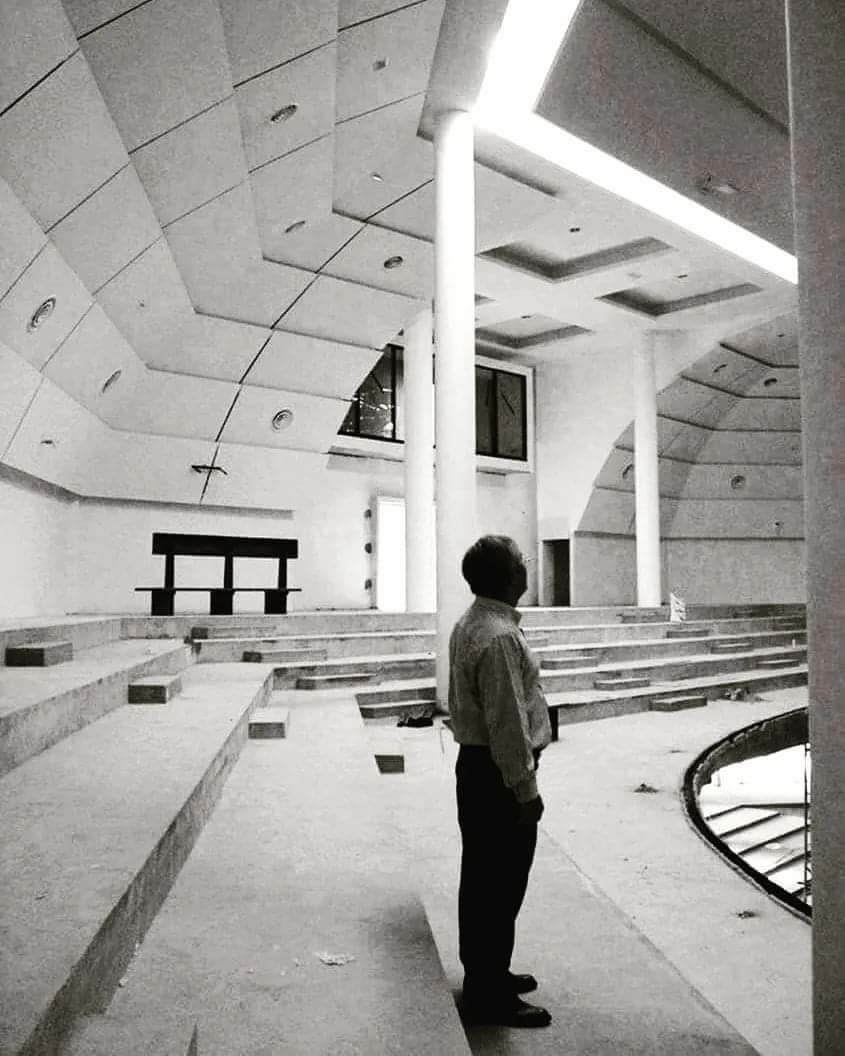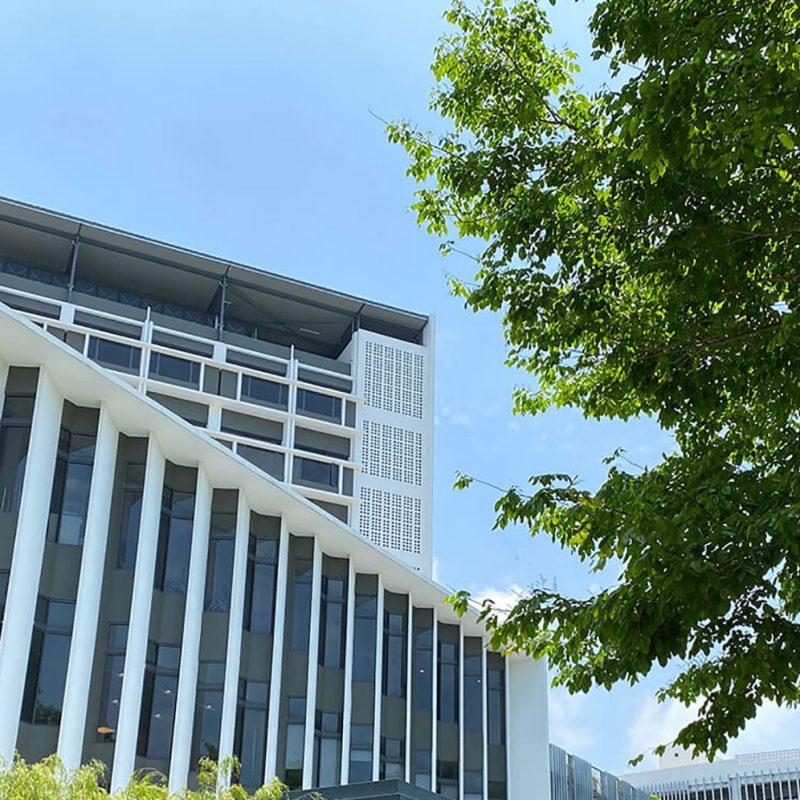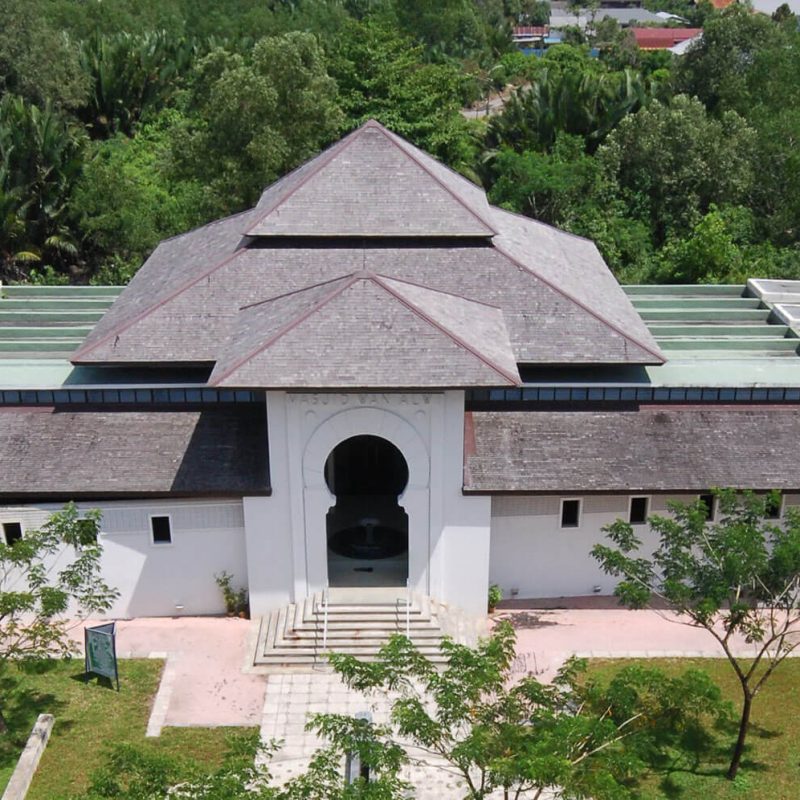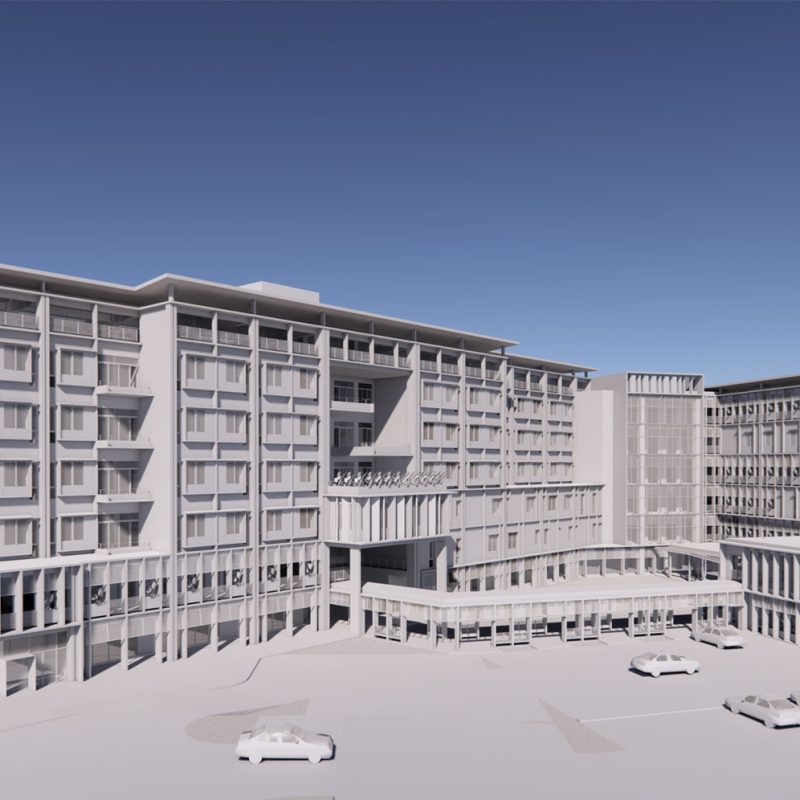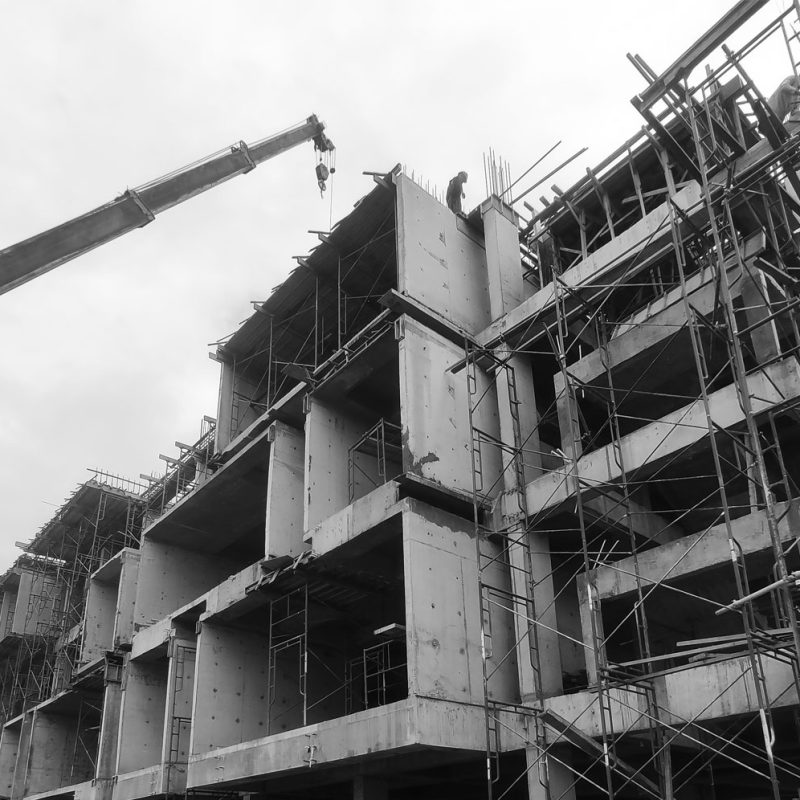Location
- Malaysia
City
- Kuching | Sarawak
Duration
- 2004 – 2005
Client
- The Secretary of The Trustees of The Methodist Church in Sarawak
Surface
- Site area
- : –
- Building area
- : –
- Building height
- : 3 storeys
Status
- Completed
Project Type
- Public and Civic Buildings
Themes
- Religious | Church

This project was a gift; passed on from an ‘elder’ architectural firm with more pressing work commitments. The brief was handed over with initial schematics of the church building – the structure was to be sited behind the present church building. It was to have its own under croft car parking with a generous seating capacity of 1500 people in auditorium format. These were the physical requirements, and then there were the aesthetic requirements put forward helpfully by the church committee; complete with sketches and pictures to illustrate their perception of the new church. The images were of traditional churches with arches and steeples.
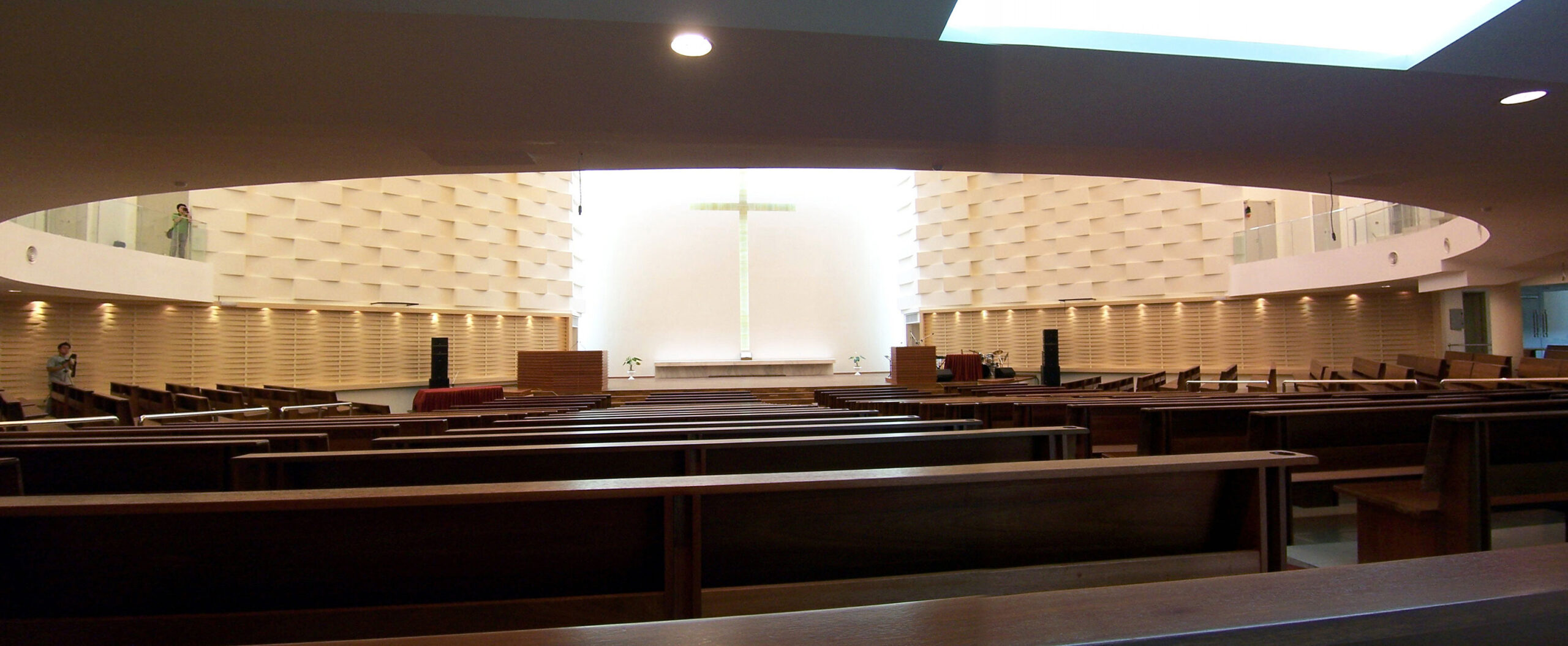
In response to that, we were more interested in relating the new church building to its location and context, which is the industrial fringe of Kuching; quite different from the committee’s images of the church sited on rolling fields of gold. We searched for a modern interpretation of a church building – reviewing buildings by Alvaro Siza and Richard Meier, including making a study tour to visit WOHA’s St Mary’s of the Angels in Singapore.
The objective was to educate the client; to equip them with the necessary precedents to understand their new church building. The long exploration and education process appears to have worked. The client accepted a design scheme that was modern and new to the Methodist Architectural Vocabulary in Sarawak.

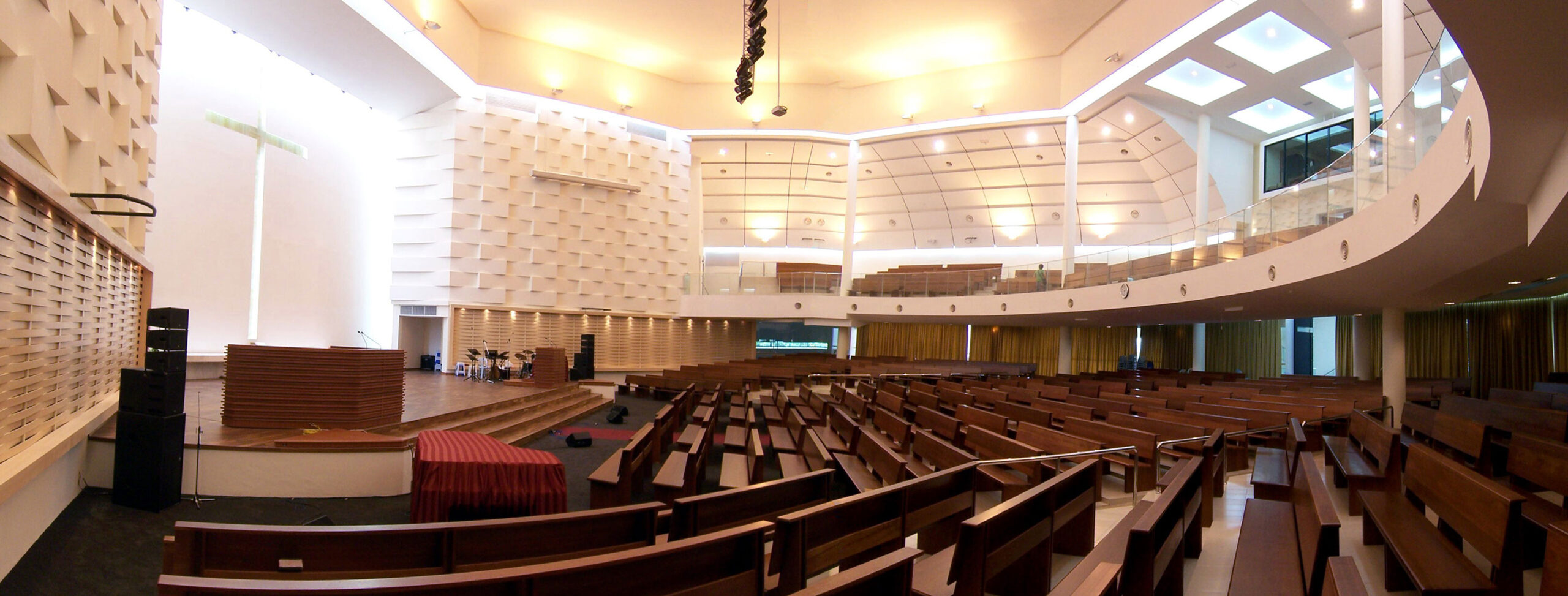

The configuration of the building is a result of two physical requirements – the first was to create an auditorium like space internally; while the second was to build to the maximum allowable site coverage. Coincidentally, these requirements worked together to reinforce the building’s final form.
As this site is adjacent to a busy and noisy trunk road serving the Pending Industrial Area, it was necessary to design the external face to protect against noise and dust. The result is a geometrical aligned building that at first glance appears sombre and aloof. Upon closer inspection, it becomes apparent that the building is trying to reveal itself through its cantilevered walls and carefully placed slot windows and skylights.
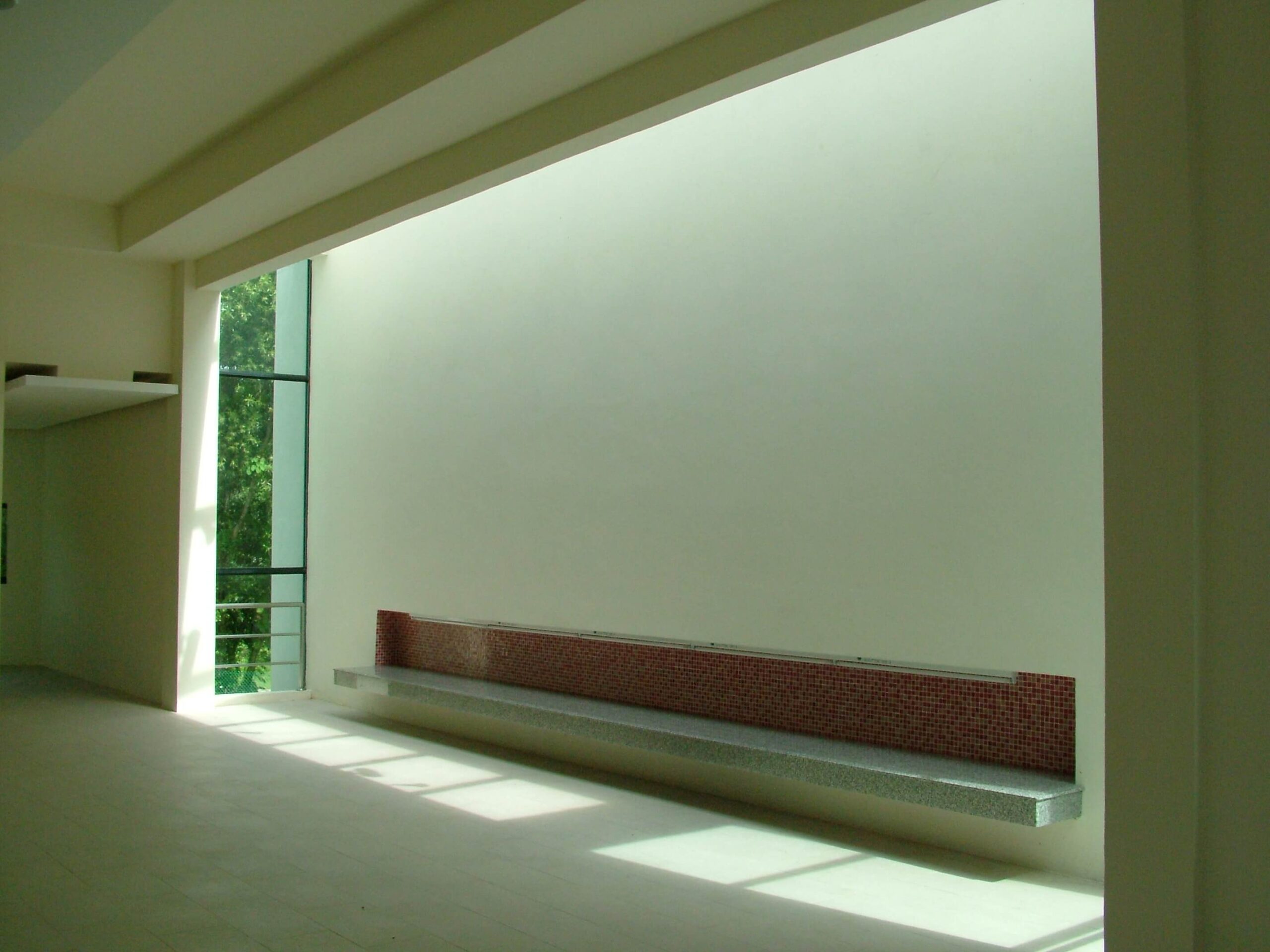
The building is approached by a side road adjacent to the former Ching Kwong Church; the ground level is mostly dedicated to car parking with a small section for the porte cochere and the entrance lobby. The entrance lobby is served by twin flights of stairs that lead to the main entrance level. At this level, the main entrance area has supported by ample gallery space; that serves as pre-function space as well as informal gathering space for the church extra-curricular activities. This space has views into the sanctuary with limited views to the outside; lit mostly with natural lighting via side lights and skylights. This is intentional; designed to concentrate inwards to the sanctuary without outside distractions to diffuse one’s spiritual focus. There is also another set of stairs that serves the mezzanine seating area.
The humble exterior architecture is carefully choreographed to contrast and further enhance the sensory experience of entering the ‘sanctuary’. A section through the building best describes this experience of entry below the mezzanine and to have the 14.3m-high auditorium revealed. In effect, the ‘soft’ crucible of the auditorium is cradled within the angular exterior shells.



The sombre exteriors reveal a warm and personable interior accentuated by the sweeping arch of the mezzanine floor. This is further reinforced by the double curve ceiling coves above the mezzanine seating area. The entire internal space is indirectly lit with natural light – bathing the interiors through roof skylights and side lights behind the altar.
The material and colour palette of the interiors were kept simple – using gypsum board, timber strips, and plywood to craft the interiors. The use of ‘common’ off-the-shelf materials such as plywood and gypsum board were a topic of contention with our client, who had intended for the interiors to be ‘glazed’ with richer furnishings. The simple and honest timber construction of the pews, for example, intended to convey a message of frugality and sensibility was the cause of numerous mock up sessions followed by discussions to modulate the client’s mindset.
Fortunately, our design rationale was aided by a tight construction budget; making it possible to pursue simple solutions and details that reflect the true nature of the materials used.
Team Credits
Architect
- Design Network Architects Sdn Bhd
Engineer
- C & S : Perunding Perkasa
- M & E : CH Engineering Co.
Contractor
- Perbena Emas Sdn Bhd
Design Team
- Wee Hii Min
- Arlene Chew
Photography
- Arlene Chew
- Lau Ming Ngi
Publications
Awards
- Mention | PAM Awards 2006 | Public and Civic Buildings
Share our project
